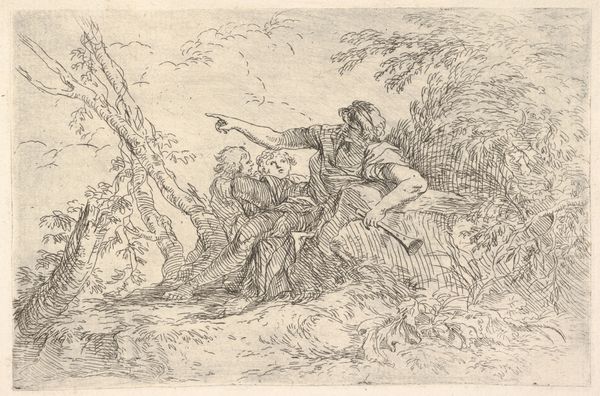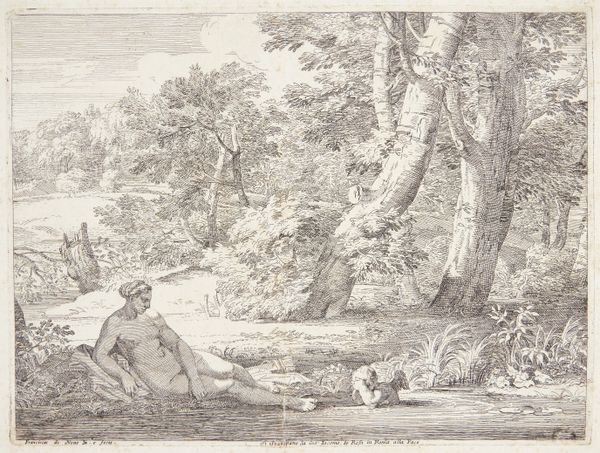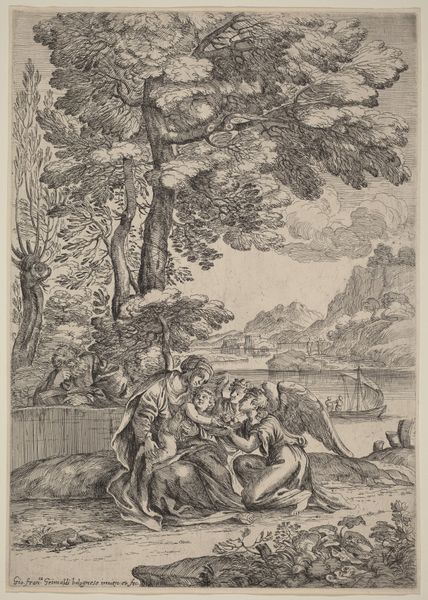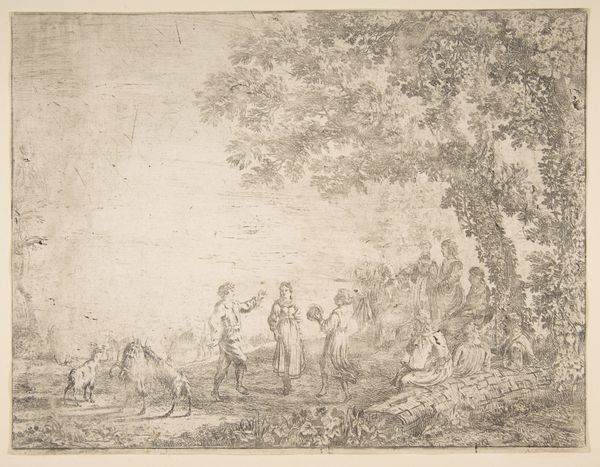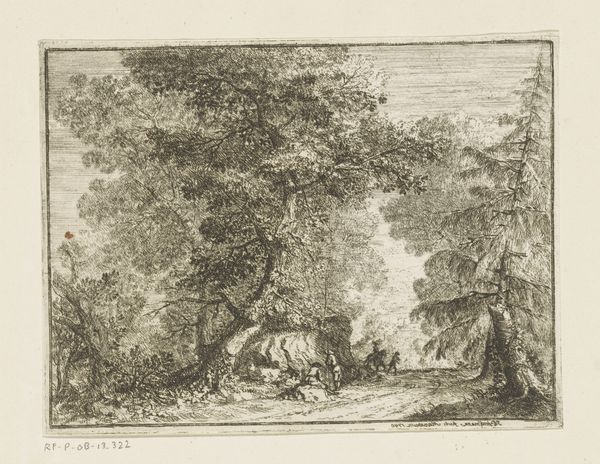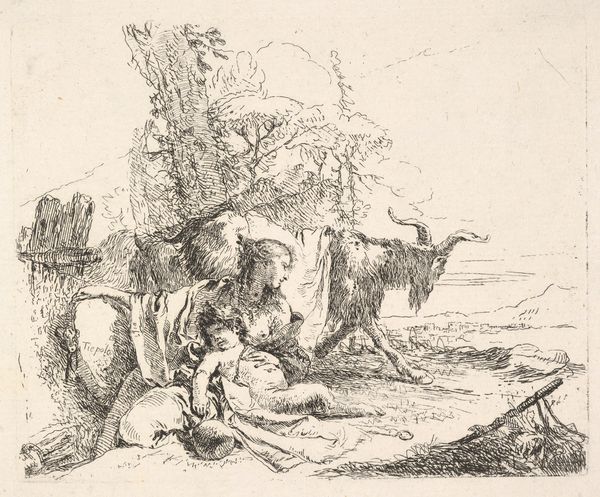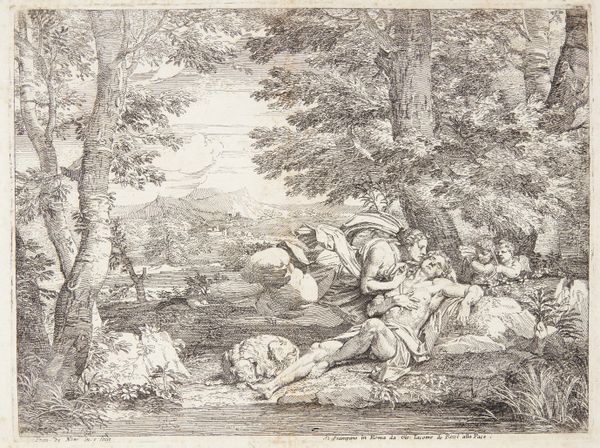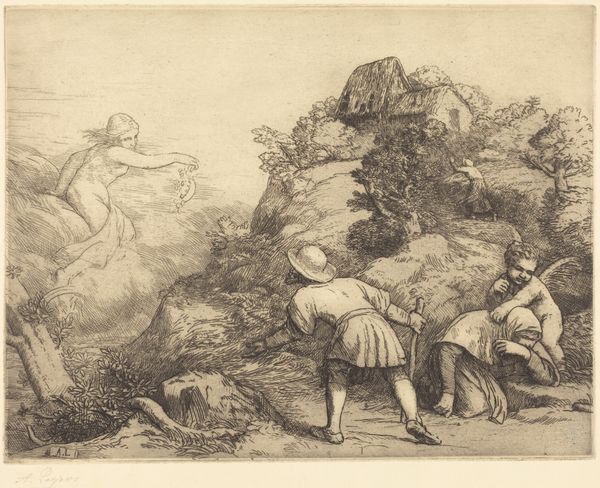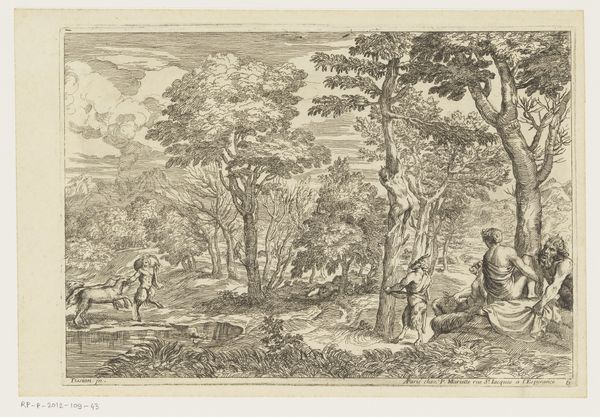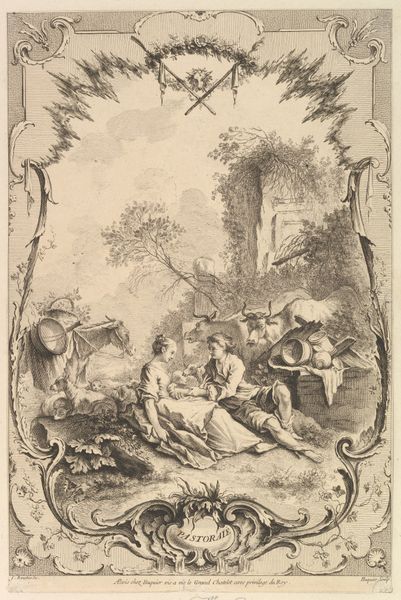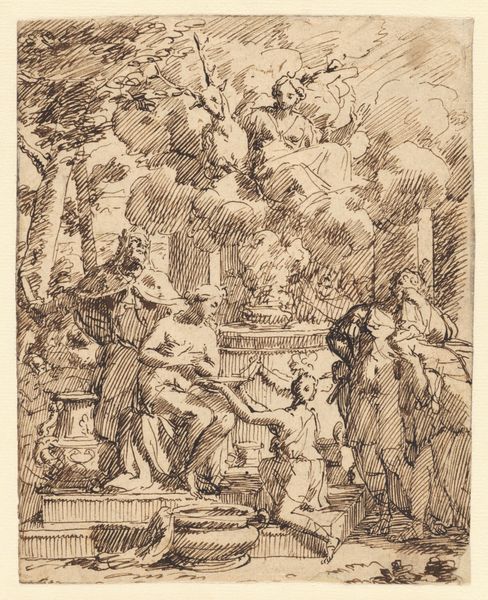
A satyr reclining at the foot of a staute of Priapus, goats at the right 1640 - 1650
0:00
0:00
drawing, print, etching
#
drawing
#
allegory
#
baroque
# print
#
etching
#
landscape
#
figuration
#
form
#
line
#
genre-painting
#
history-painting
#
italian-renaissance
#
nude
Dimensions: sheet: 4 1/2 x 8 3/8 in. (11.5 x 21.3 cm)
Copyright: Public Domain
Editor: This is "A Satyr Reclining at the Foot of a Statue of Priapus, Goats at the Right," an etching by Giovanni Benedetto Castiglione, created sometime between 1640 and 1650. The stark contrast of light and shadow really draws the eye. What stands out to you in terms of composition? Curator: I'm immediately struck by the deployment of line. Notice how the artist utilizes varied densities of hatching and cross-hatching to articulate form and volume. The linear quality defines the satyr's musculature, contrasting sharply with the softer treatment of the landscape in the background. Consider the function of this contrast. Editor: It does create a sense of depth, pushing the landscape back and bringing the satyr forward. So, it's less about the 'what' and more about 'how' it’s depicted? Curator: Precisely. The etching technique allows for incredible detail. Note the individual hairs of the goats and the texture of the bark on the trees. These minute details contribute to the overall formal complexity. How do you interpret the role of the Priapus statue within this formal arrangement? Editor: It's rigid and upright, acting almost as a formal counterpoint to the relaxed, sinuous pose of the satyr. Perhaps the artist is playing with geometric versus organic forms? Curator: An astute observation. The strategic juxtaposition invites further inquiry into the relationship between these elements. Through formal analysis, we gain insight into the artist's aesthetic choices and how they contribute to the overall impact of the work. Editor: This formal approach really gives a new perspective! It makes me consider how the artist’s technique contributes to the meaning of the work. Curator: Indeed. Close visual analysis provides a foundation for understanding the artist's intentions. The interaction of form and content allows for a more nuanced and layered reading.
Comments
No comments
Be the first to comment and join the conversation on the ultimate creative platform.
